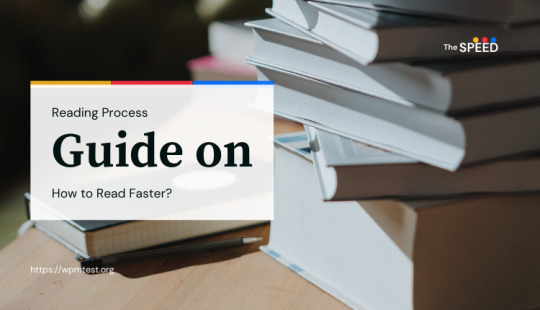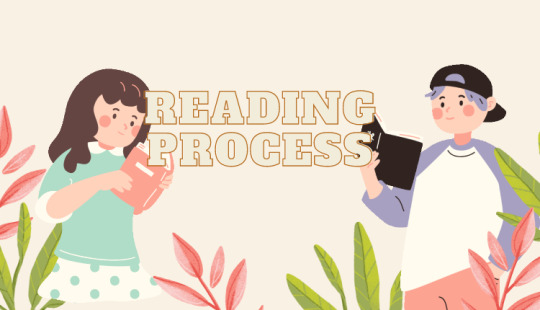Text
Guide on How to Read Faster?

Isn't it so much easier to get through school if you could complete your reading assignments three times as fast? Wouldn't it be more fun to jump right into a good piece of fiction and blaze through it in less than a day? Let's explore speed reading in more detail.
The two ways of thinking about speed reading may be familiar to you if you've already looked into the subject. It is said that speed reading is the essence of success and everything you have ever dreamed of. Others say speed reading is a myth and doesn't work. Truth usually lies somewhere in the middle.
When considering speed reading, the first thing you need to ask yourself is: "Why do I want to read faster?" While speed reading novels for pleasure requires a different approach than speed reading textbooks or research articles for understanding hard science, speed reading novels for pleasure requires one approach. When using RSVP tests or Rapid Serial Visual Presentations, individual words or blocks of two or three appear sequentially on the screen.
Reading Process
Before we move on to the techniques, it's important to understand the reading process.
Reading is the action of analyzing a piece of writing to understand its intended meaning. So, reading effectively requires more than just recognizing a series of words. You must also understand the relationship between the words and the unstated implications of the situation.
Compare this to skimming, which is the rapid consumption of text to gain a general idea of what you're reading. The gist of it will become apparent even if you don't comprehend the details. The goal of speed reading is to maintain skim-like reading speeds while maintaining reading-like comprehension.
An educated adult reads approximately 200-400 words per minute. It is claimed that speed readers can read thousands of words in a minute. To do so, they rely on peripheral vision.
The fovea, or center of your visual field, has the highest acuity, about 1° in any direction. The width of your thumb extended at arm's length is approximately this size. The parafovea has moderate acuity between 1 and 5° from the center, and the periphery is greater than 5° from the center. In peripheral vision, it is physically and biologically impossible to recognize and interpret the text.
Try looking at a stationary object, such as where the wall meets the ceiling. Keep your eyes smoothly moving from one side to the other of the line. Unfortunately, it is actually impossible. Multiple small, jerky movements of your eyes are called saccades. During reading, saccades allow the reader to fixate the fovea on a word by moving their eyes quickly.

When speed readers use their fingers to guide their eye movements, I initially thought they employed smooth pursuit. Smooth pursuit occurs when your eyes fixate on a moving object and can follow it smoothly. If you move your finger from side to side in front of you, your eyes will smoothly follow it without jerking. The finger technique speed readers use is less about the pursuit of smoothness and more about maintaining a metronomic pace as they read.
The saccades allow the fovea to focus on the next word. It is estimated that each fixation lasts around 250 milliseconds, but it can vary greatly based on legibility, difficulty, and whether it is proofreading or reading for comprehension or swiping. However, not every word is fixed.
In about half of the sentences, the word "the" is skipped. In certain cases, a word may be skipped even though it has been processed. The rapid serial visual processing (RSVP) technology is useful for displaying information (usually text or images) in which the text appears word-by-word in a fixed focal point. In addition to being a basic reading aid, RSVP is being investigated as a way to boost individual reading rates. Additionally, RSVP is being used for research in visual impairment, dyslexia, perceptual and cognitive psychology. There are many different languages and platforms available for RSVP.
Through these technologies, words are presented to the viewer in the center of the visual field in rapid succession, thereby eliminating the need for eye movements. In light of the aforementioned individual variations, visual processing physiology, and the way we comprehend language, I would argue that RSVP is an inefficient way to consume text. RSVP does not allow for regressions, which is another problem. Regression is a brief look backward in the text to return to an earlier word. The purpose of this is to correct errors' incomprehension. RSVP further reduces comprehension by eliminating the possibility of regressions.
According to proponents of speed reading, subvocalization, or using your inner voice while reading, will slow you down. Numerous studies have examined the effects of eliminating or minimizing subvocalization. Findings consistently indicated decreased comprehension. It makes sense that phonological processing is an important part of reading and comprehension, since all writing systems represent words, and since the primary form of language is vocal rather than visual.
What does all this mean? Perception of visual information occurs rapidly. However, reading is slowed down by linguistic processing. It has been demonstrated that language processing rather than the ability to control eye movements is the determining factor of reading speed in various studies. We are limited in our ability to read by our ability to identify and understand words rather than by our ability to see them. As a result, reading faster actually reduces comprehension, which may or may not matter depending on what you are reading.
Learn how to read faster

After we have clarified the science behind reading and speed reading, we will take a look at how to speed read faster. To read faster, one does not need to read the same way for every reading goal.
As a method of improving one's reading comprehension and speed, it is suggested that one practice more reading. Even though this does help, it's a very slow and gradual process that doesn't produce drastic changes.
To drastically improve speed, comprehension must be reduced. We need to read slower to increase comprehension. There's no way around that; you can only improve slowly.
In each case, we have to balance reading comprehension with reading speed. Is it possible to reduce comprehension minimally, while increasing speed maximally? I have found the following techniques to be the most useful over the years.
1) Determine the Type of Reading
Determine your reading goal and the type of reading you will perform first. It is not necessary to maximize comprehension for every reading task. Do you read nonfiction for pleasure? Do you proofread an essay for a friend? Do you read a textbook for class? Do you read high yield notes and bullet points for one of your classes?
Having a clear goal in mind will help you determine the minimum level of comprehension required and, therefore, the maximum speed that can be achieved.
2) Remain Flexible
Secondly, make sure your speed is flexible. During the reading process, you will come across sections of text that are easy for you. It's a simple language, you understand the concepts, and you can easily get through it. You don't have to focus on every word to understand it.
In other sections, you will be introduced to new words or concepts that require your attention. Often, this will happen, so you must be flexible with your reading speed to optimize your speed/comprehension balance. If you're not sure about the significance of a paragraph, focus on its first and last sentences.
3) Use a Pacer
Use a pacer, such as your finger or a pen. You can follow along with your eyes by running your pacer below each line from end to end. You will instantly increase your reading speed with minimal comprehension loss.
It is important to find the sweet spot between pushing the boundaries of your comfort zone and only slightly reducing comprehension. My opinion is that if you reduce comprehension by 10% but gain 50% in speed, that's not a bad tradeoff. The pacer will need to move faster in places and slower in others, as described above.
Different Types of Reading
1) Textbooks
There is often a lot of unnecessary text in textbooks. There's no need to worry if you accidentally skip a paragraph or a whole section. Pay attention to bolded words or sections that contain key information, and speed up while reading text that adds context to what you've already learned.
Identifying what is important in each section by looking at section headings and bolded terms will make it easier for you to read the section. It may take a few minutes at first, but overall, if you execute it properly, you should save time.
When I'm finished reading a section or page, I summarize what I've learned. Alternatively, I can write a few bullet points or speak out loud to myself. This greatly improves retention and comprehension.
2) Books for Pleasure
If you read for pleasure, you can do whatever you want. If you want to enjoy the nuances of language, then you should slow down. In contrast, if you only wish to grasp the gist, it won't be a problem if your comprehension drops considerably.
It very much depends on the book and what you hope to gain from it. Depending on the book, I read every word or skip sections. The majority of books fall somewhere in the middle.
3) Research
In reading research articles, which you will read a lot during your pre-med, medical school, and residency years, follow a systematic approach. The best way to gain a deeper understanding of the abstract is to read it slowly and carefully. Focus on those key points when you read the full article.
Spend a few minutes reading the abstract, a few introductory paragraphs, the methods and results in sections quickly, and then spend more time on the conclusion.
A Guide to Speed Reading
Problem – The amount of reading material available these days is so overwhelming that often it's impossible to keep up. In this way, we scroll headlines and teasers instead of reading content that will actually educate us. Our lives are often dominated by the pressure to finish our daily tasks on time or keep up with the latest developments in our areas of interest, regardless of whether we are at work or studying.
Solution – Today, speed reading is a highly valuable and essential skill. People who master speed reading techniques can read as much as three times faster than the average reader, who usually reads between 200 and 250 words per minute.
Benefits – When speed reading, the human brain is challenged to perform faster and better. With speed reading, your brain will be trained to absorb information much faster than it is used to. As a result, your memory and brain function will be improved. Additionally, you may benefit from increased general and specialized knowledge, improved problem-solving skills, or increased self-confidence.
A Final Thought
We have compiled this article to teach you how to read faster. This article will describe how speed reading techniques work and provide you with tips, information, and resources to help you read and learn more quickly.
3 notes
·
View notes